- Call Us: +91 9695934440
- Email: kashikatravel01@gmail.com

Dashashwamedh Ghat (Hindi: दशाश्वमेध घाट) is the main ghat in Varanasi on the Ganges River. It is located close to Vishwanath Temple and is probably the most spectacular ghat. Two Hindu legends are associated with it: According to one, Lord Brahma created it to welcome Lord Shiva.
According to another legend, Lord Brahma sacrificed ten horses during Dasa-Ashwamedha yajna performed here.
Sarnath Museum is a city located 13 kilometres north-east of Varanasi near the confluence of the Ganges and the Gomati rivers in Uttar Pradesh, India. The deer park in Sarnath is where Gautama Buddha first taught the Dharma, and where the Buddhist Sangha came into existence through the enlightenment of Kondanna. Singhpur, a village approximately one km away from the site, was the birthplace of Shreyansanath, the Eleventh Tirthankara of Jainism.
Isipatana is mentioned by the Buddha as one of the four places of pilgrimage which his devout followers should visit, if they wanted to visit a place for that reason. It was also the site of the Buddha's Dhammacakkappavattana Sutta, which was his first teaching after attaining enlightenment, in which he taught the four noble truths and the teachings associated with it.
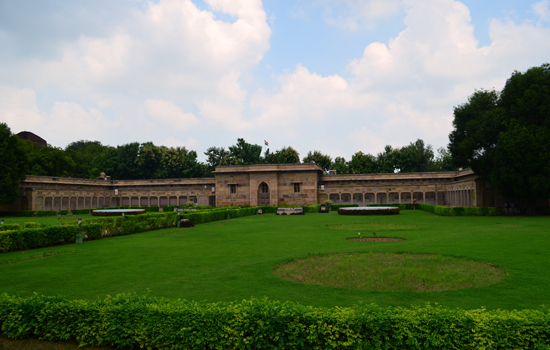

Ganga Aarti is the magnificent event during evening in the Varanasi that one must not miss to see it. It makes us to experience the great feelings while Gange aarti become in process. This beautiful ritual makes every moment of the evening period special and fills with the spiritual thoughts. It is performed by the brass lamps which accompanied with the mantra chant in the presence of the huge crowd.
All the priests who have to perform the aarti, wear same cloth, the dhoti and kurta which is tightly bind with a long towel. First they make preparation of the Gange aarti by making collection of the five elevated planks, a multi tiered oil lamp, an idol of the Goddess Ganga, flowers, incense sticks, a conch shell, a big and heavy brass lamp having a snake hood at the edge of the River Gange.
Kashi Vishvanath Temple is one of the most famous Hindu temples and is dedicated to Lord Shiva. It is located in Varanasi, Uttar Pradesh, India. The temple stands on the western bank of the holy river Ganga, and is one of the twelve Jyotirlingas, the holiest of Shiva temples. The main deity is known by the name Vishvanatha or Vishveshvara meaning Ruler of The Universe. The Varanasi city is also called Kashi, and hence the temple is popularly called Kashi Vishvanath Temple.
The Temple has been referred to in Hindu Scriptures for a very long time and as a central part of worship in the Shaiva philosophy. It has been destroyed and re-constructed a number of times in the history. The last structure was demolished by Aurangzeb, the sixth Mughal emperor who constructed the Gyanvapi Mosque on its site. The current structure was built on an adjacent site by the Maratha monarch, Ahilya Bai Holkar of Indore in 1780.
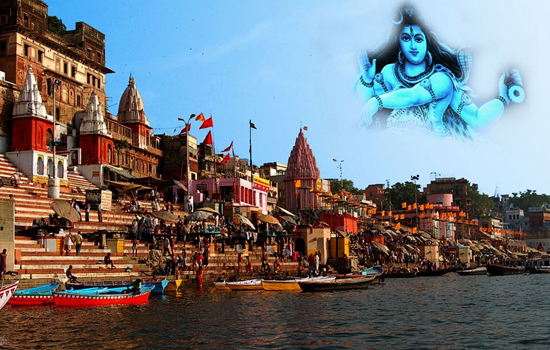
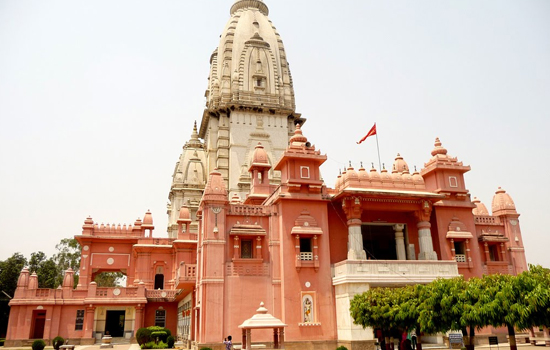
Birla Temple is located in the BHU campus in Varanasi and it is known as the Birla Temple because it is built by the Birla Group of Industries. The temple was founded by the Raja Birla of the Birla family of great industrialists. It was planned by the Pt. Madan Mohan Malaviya (the founder of the Banaras Hindu University) as part of the BHU campus. Temple is open to all the people of any castes and religions.
There are nine temples in the BHU campus of Shiva Lingam, Nataraj ji, Mata Parvati ji, Ganesh ji, Panchmukhi Mahadev, Hanuman ji, Mata Saraswati ji, and Nandi ji. Birla Temple is made up of the marble and its construction was completed in 1965. The tower of the temple is known as the tallest temple tower. Even it is tallest to the Qutub Minar in the New Delhi. Birla Temple is matchless and ostentatious temple in the Varanasi.
Nepali Temple alias Kathwala Temple, located in the Lalita Ghat was built by the King of Nepal in Nepali style of architecture. Sometimes referred as 'Mini Khajuraho', the temple has exquisite woodwork that displays the craftsmanship of Nepali workers, who were brought here for its construction.
This unique temple is visited by tourists from all over the world. King of Nepal, Rana Bahadur Shah took exile in Varanasi from 1800 to 1804 and titled himself as "Swami Nirgunanda". During his exile, he decided to build a replica of Pashupatinath Temple in Varanasi. Construction of the temple commenced during his exile / stay in Varanasi. During the construction, Shah moved back to Nepal.
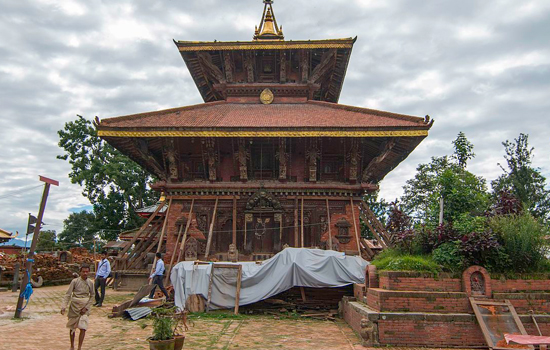
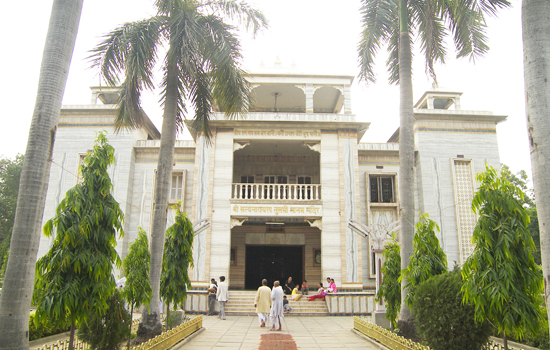
Tulsi Manas temple is one of the most famous temples of Varanasi. It is also an important tourist attraction of the holy city. The Tulsi Manas temple is located near the famous Durga temple. It was built in white marble in the year 1964. The temple has been made more charming by the magnificent landscaping around it. The Tulsi Manas temple is dedicated to lord Ram.
It is believed to be built at the same place where Tulsidas wrote the famous Indian epic, Ramcharitamanasa. The walls of the Tulsi Manas temple are engraved with verses and scenes from the Ramcharitammanasa, the Hindi version of the Ramayana. The temple is open from 5.30 AM to noon and 3.30 to 9 PM.
Durga temple is also known as the Monkey temple (because of the presence of huge number of monkeys), situated in the Durga Kund, Varanasi. The temple is dedicated to the Goddess Durga. It was built in the 18th century. Durga temple was constructed by a Bengali Maharani in the north Indian Style with multi tiered shikhara. An attractive pond known as the Durga Kund is made on the right side of the temple which really increases the beauty of the temple.
The pond has stone stairs at all sides as well as there is watch pillars at each corner of the pond. The statue of Goddess Durga is not human made; it was appeared by its own in the temple. A millions of Hindu devotees go to the Durga temple in the Navratri and other propitious occasions and pray to the Goddess Durga to complete their wishes. This temple is made up in the square shape with the red color stone representing the color of the Mata Durga.
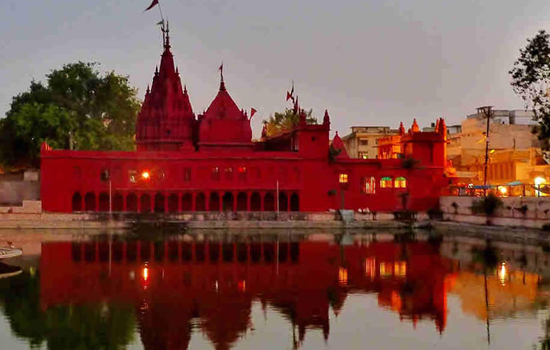
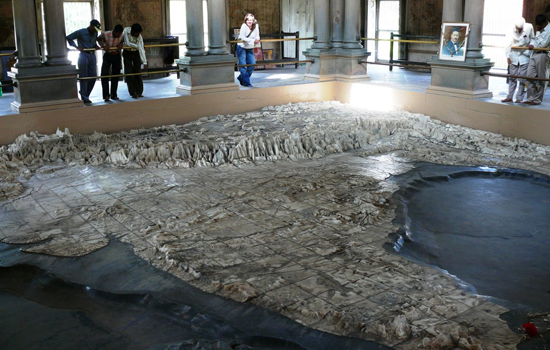
he Bharat Mata Temple is located at the Mahatma Gandhi Kashi Vidyapeeth campus, Varanasi and dedicated to the Bharat Mata (Mother India). It was constructed by the Babu Shiv Prasad Gupt and inaugurated by the Mahatma Gandhi in the year 1936. The statue of the Mother India is made up of the marble and looks like a model which symbolizes the entire India, represents mountain, plains and oceans of the India. The Bharat Mata temple does not have a traditional statue of Gods or Goddess but it has a real map of the Mother India.
Bharat Mata Temple is a unique, has an attractive and huge map of the Mother India on the ground denoting the statue of mother of India. The statue has inimitable design which indicates the Goddess of India for all the religious deities, freedom fighters and leaders. The temple is a kind of admiration to all those who take part in the formation of India as it was built before the partition of the India.
According to the ancient history, it is said that the Goddess Durga (consort of the Lord Shiva) had thrown her sword in the river (called Assi River) after killing the demon Shumbha-Nishumbha. That’s why the place has been named as Assi Ghat as it is located at the union of the River Ganga and Assi River.
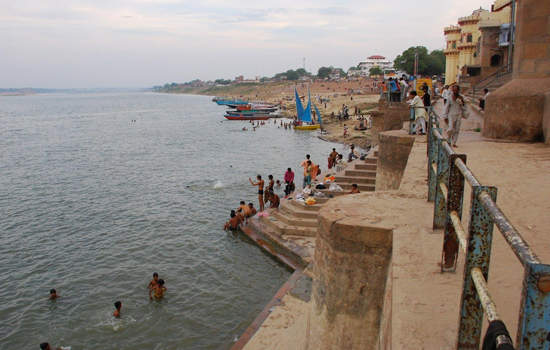

Manikarnika Ghat is the main cremation Ghat of Varanasi. Manikarnika Ghat is one of the oldest and most sacred Ghats in Benaras. According to the Hindu mythology, being burned here provides an instant gateway to liberation from the cycle of births and rebirths. Lying at the center of the five tirthas, Manikarnika Ghat symbolizes both creation and destruction.
At Manikarnika Ghat, the mortal remains are consigned to flames with the prayers that the souls rest in eternal peace. There is a sacred well at the Manikarnika Ghat, called the Manikarnika Kund. Manikarnika Kund is said to be dug by Lord Vishnu at the time of creation while the hot ashes of the burnt bodies makes one remember the inevitable destruction of everything in the world.
Harish Chandra Ghat is one of the oldest Ghats of Varanasi. Harish Chandra Ghat is name after a mythological King Harish Chandra, who once worked at the cremation ground here for the perseverance of truth and charity. It is believed that the Gods rewarded him for his resolve, charity and truthfulness and restored his lost throne and his dead son to him. Harish Chandra Ghat is one of the two cremation Ghats (the other being Manikarnika Ghat) and is some times referred as Adi Manikarnika (the original creation ground).
Hindus from distant places bring the dead bodies of their near and dear ones to the Harish Chandra Ghat for cremation. In Hindu mythology it is believed that if a person is cremated at the Harish Chandra Ghat, that person gets salvation or "moksha". The Harish Chandra Ghat was somewhat modernized in late 1980's, when an electric crematorium was opened here.
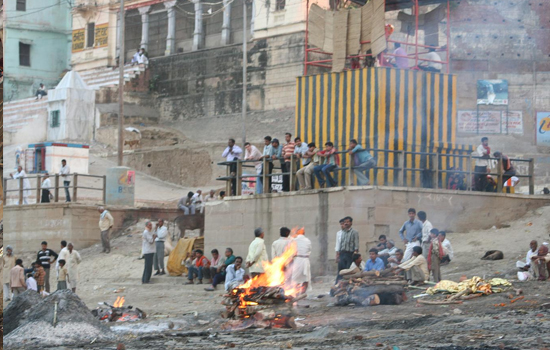
Copyrights © 2017 Kashika Travel. All Rights Reserved